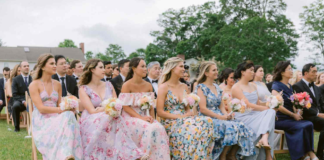If you want to make custom embroidery patches, you need to understand how to do it. You need to know how to create a patch file, design it, and attach it to the item you want to embroider. You also need to know how to combine colors.
Best Custom Embroidery Patch
If you want to get your hands on the best Custom Embroidery Patches Services, you’re going to need a few tips. First, you’ll need to understand the options available to you.
The most important thing is to choose the most appropriate size. If you don’t know what size you need, you might end up with a patch that looks oversized or too small. A good rule of thumb is to go for a patch that is 60mm or less.
Most Important Elements of your Design
The next step is to figure out the most important elements of your design. This means choosing the color threads and the background. You might need to consider the size and style of the logo or design. You also need to make sure that your artwork is of high resolution:
- If you want to make your design stand out, choose a bright border.
- This will be the most visible element of your patch.
- There are two types of borders that you can choose from.
- These include a hot-cut and married border. The latter is heavier and more durable.
How to Create a Patch File for your Embroidery Machine?
If you’ve ever wanted to create a patch for your embroidery machine, it isn’t difficult. But you’ll need to follow a few steps before you can start.
The first step is to determine the material that you want to use. Patches are often made from denim, twill, or thicker woven fabrics. You may need to add interfacing or adhesive to the fabric before you embroider.
Image to Stitch
The next step is to choose an embroidery design program. Most programs come with a library of designs that you can select from. If you can’t find a suitable design, you can always make your own. You’ll need a design program with a “image to stitch” button.
Once you’ve selected your design, you’ll need to digitize it. You can do this by hand or with a specialized design software. You may also have to manually resize the image. Some programs allow you to auto select parts of the design.
Water-Soluble Paper or Fabric
You can then print out the design on water-soluble paper or fabric. If you’re using fabric, you’ll need to set up a light table to see the designs clearly. You can also trace the design with a washable fabric pen.
Custom embroidered patches are a great way to advertise your brand. These high-quality items are easy to make and can be embroidered in different styles. They can also be applied to a variety of fabrics. Using a professional patch maker can help you create a unique and high-quality piece.
Embroidered & Printed Patches
In addition to embroidery digitizing and printed patches, there are also patches that are attached to a fabric without the use of a needle and thread. These include no-backing patches, sew-on patches, and iron-on patches. Each type of patch has its own advantages and disadvantages. However, the most reliable technique is sewing. This method requires a machine and will last the longest.
Another option is to hand sew a patch. This may be a challenge for beginners. You will need to measure the length and width of the patch and divide it by two to determine the size.
Some types of patches have a plastic backing. This backing gives the patch added strength and rigidity. It’s a popular choice for service industries and is available in many colors.
High-Quality Polyester Threads
Embroidered patches are an easy way to create customized designs. They are a great way to add a personalized touch to apparel, accessories, and other items. They are available in a variety of colors and styles. They are made from high-quality polyester threads.
Embroidered patches can be sewn on, ironed on, or attached with a backing. The backing is usually plastic or a hook and loop. The Velcro back is becoming more popular. It makes it easy to attach and remove the patch.
While it may be tempting to add a lot of elements to your design, it is best to keep it simple. This will ensure that your custom embroidery patch looks clean, readable, and beautiful.
Final Steps:
If you plan to add text, the minimum font size is 0.25 inches. You should choose a simple font, such as Arial or Helvetica. If the text is complex, it may be difficult to stitch it at small sizes.
You can combine two or more colors for a more ornate look. For example, you can use two different yellows. This will create a more vibrant color.




















